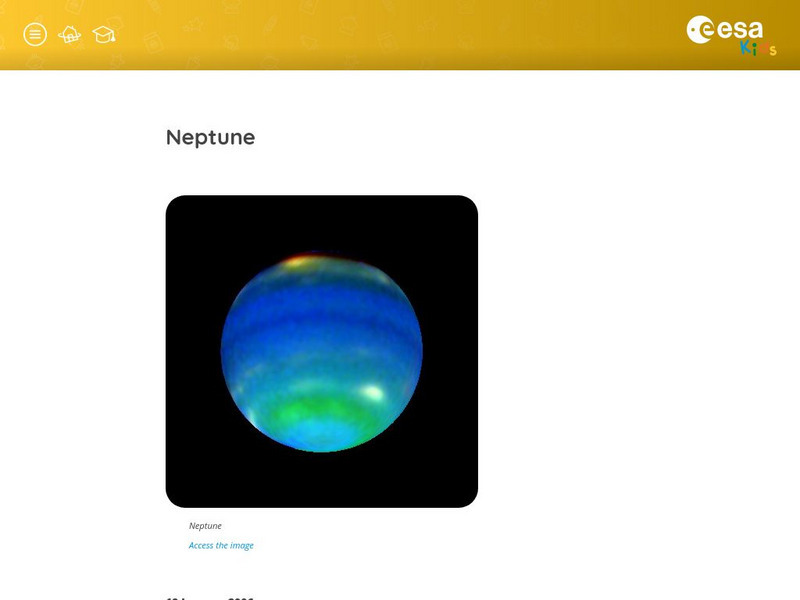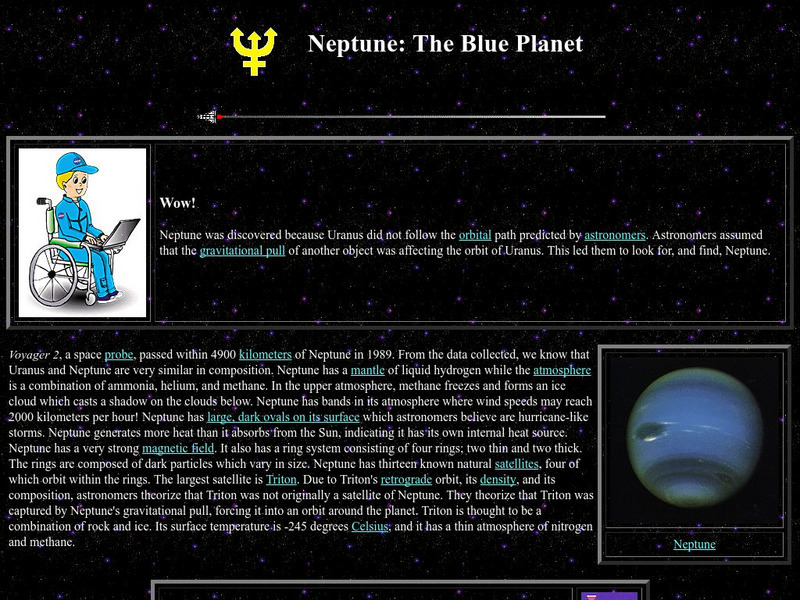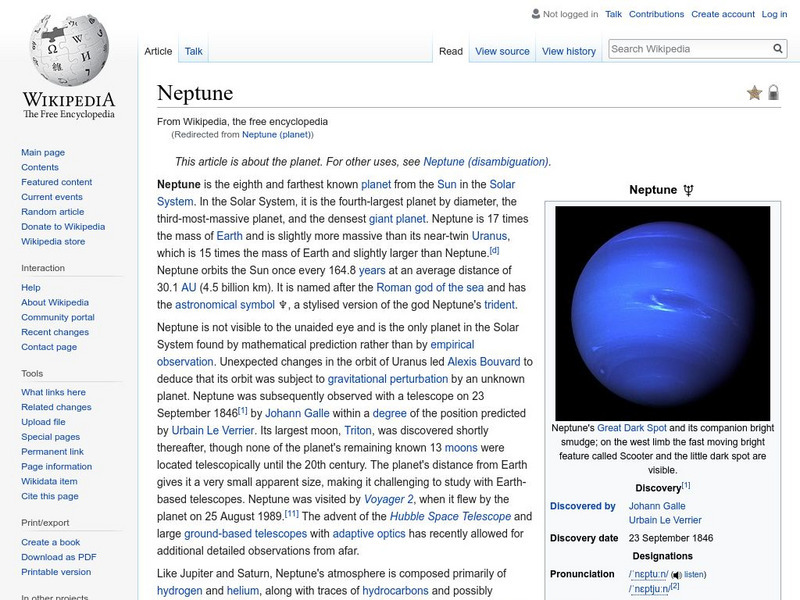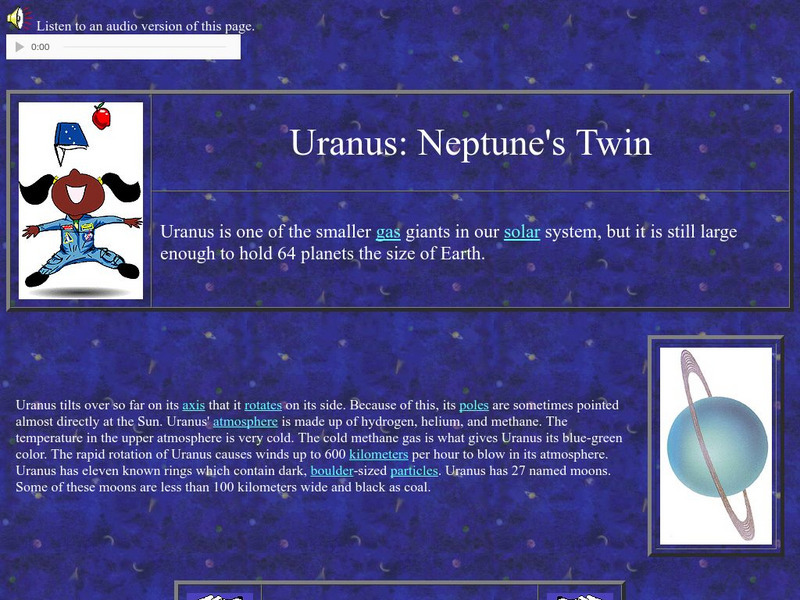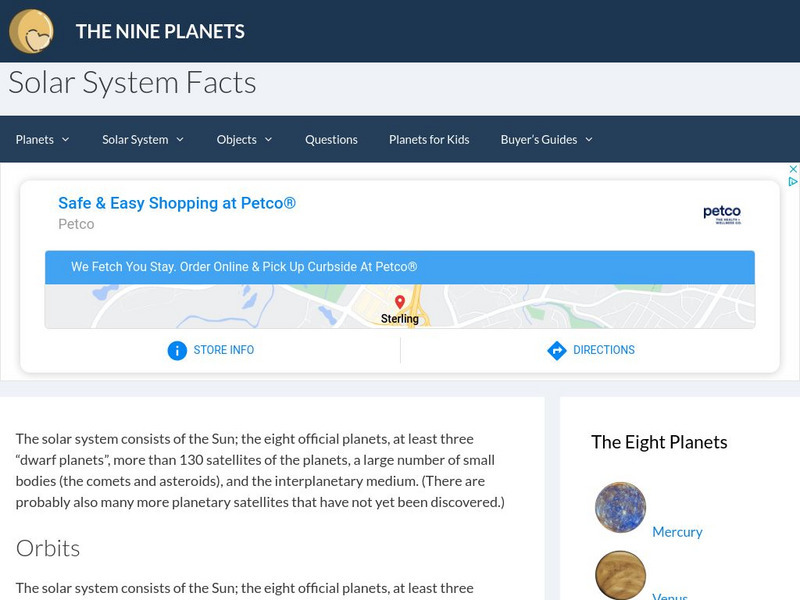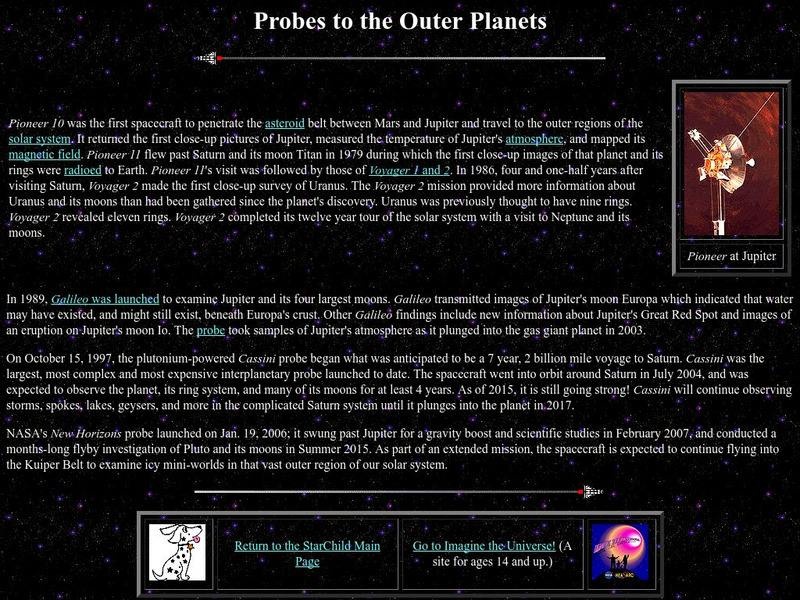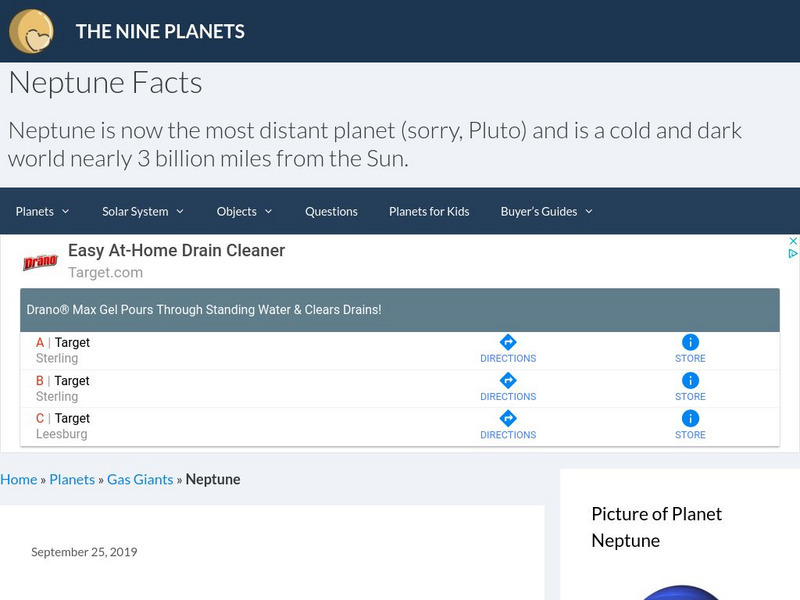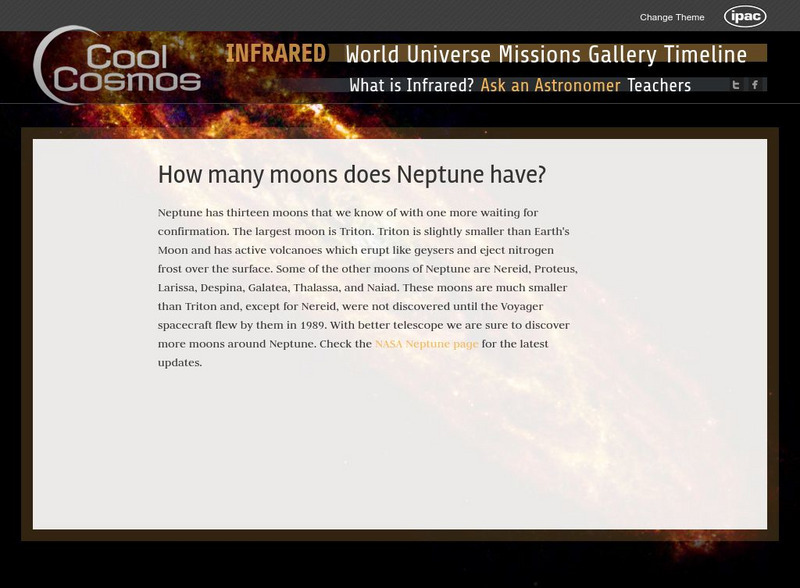NASA
Nasa: Welcome to the Planets Neptune
NASA offers a photo gallery of Neptune images. Each image includes a detailed caption describing what the image is of, and the captions are also available in streaming audio.
European Space Agency
European Space Agency: Esa Kids: Our Universe: Neptune
A basic overview of the planet Neptune. Links to information about the other planets and objects in our solar system are included.
Cool Math
Coolmath: Science Monster: Neptune
A cool fact sheet about Neptune including a place for students to enter their weight on Earth to convert it to what it would be on Neptune.
NASA
Nasa Star Child: The Blue Planet (Level 2)
A good general introduction to planet Neptune for students. Has many links to more detailed information about the planet throughout the page, as well as special links for interesting facts. Also features a printable version of the page.
Wikimedia
Wikipedia: Neptune
Wikipedia, a publicly-maintained encyclopedia, provides information on the planet Neptune, including physical characteristics, exploration, moons, and more. Additional links provided.
NASA
Nasa Star Child: Uranus, Neptune's Twin (Level 1)
Get to know the twin of Neptune with this introduction to Uranus. Listen to the information in an audio file. Features include a printable version of the page, and vocabulary words are linked to a glossary of terms.
Nine Planets
The Nine Planets: An Overview of the Solar System
A detailed overview of the history, mythology, and current scientific knowledge of each of the planets and moons in the solar system.
Science4Fun
Science4 Fun: Neptune
Learn fun facts and details about the atmosphere, composition, and discovery of Neptune, the last planet in our solar system.
Other
University of Leicester: The Solar System
Resource explores the solar system, with an in depth discussion of each of the planets and their properties.
Cosmos 4 kids
Cosmos4 Kids: Solar System: Neptune
Learn the basic details about the planet Neptune! The brief, to the point text makes this site most suitable for younger researchers.
Nine Planets
The Eight Planets: Just for Kids
Here is a clear, simple picture of the solar system. Click on the names of the planets to learn more about each. Clicking on underlined terms takes you to more and more detailed scientific information.
NASA
Nasa Star Child: Probes to the Outer Planets (Level 2)
This site has a description of the many probes sent to the outer planets, including pictures and vocabulary words linked to a glossary of terms. Other links on interesting facts and more detailed information are also included.
Wonderville Media
Wonderville: Planets
There are eight planets in orbit around our Sun. These planets form our solar system. The eight planets are Mercury, Venus, Earth, Mars, Jupiter, Saturn, Uranus, and Neptune. There are also rocks, moons, comets, and other objects going...
Ducksters
Ducksters: Astronomy for Kids: The Planet Neptune
Kids learn about the ice giant planet Neptune of the Solar System including fun facts, mass, day, year, and distance from the Sun. Astronomy for kids and teachers.
Nine Planets
The Nine Planets: Neptune
An excellent reference site for the planet Neptune. Loads of images, links to even more detail, a short table of planetary statistics, and lots of information.
NASA
Nasa Star Child: Neptune, the Blue Planet (Level 1)
An introduction to Neptune for young students. Audio content, a glossary, graphics, and a printable version are all included.
Enchanted Learning
Enchanted Learning: Neptune
A wealth of facts await you on this complete site. Topics include size, mass and gravity, length of day, orbit, distance from the sun, and more. A coloring page, quiz, fill-in-the-blanks activity, and interactive puzzle will challenge...
NASA
Nasa Space Science Data Archive: Neptunian Rings Fact Sheet
A data table of nearly everything known about the ring system of Neptune. The resource also includes an image of the rings of Neptune that can be enlarged.
A&E Television
History.com: The Space Race: Interactive Universe
A virtual journey through space offers photos and facts about Earth and its neighboring planets, comets, other celestial bodies of the Solar System, and the Milky Way and Andromeda galaxies.
NASA
Solar System Exploration: Missions to Neptune Voyager 2
Only one spacecraft has visited the most distant gas planet, Neptune. This resource provides information about the findings of the Voyager 2 spacecraft's mission to Neptune.
Space Telescope Science Institute
Hubblesite: Movie of Neptune's Rotation and Weather
This site from Hubblesite provides information on the Hubble Telescope. NASA's Hubble Space Telescope has been used to assemble a time-lapse color movie showing a full 16-hour rotation of the distant planet, Neptune.
Australian Broadcasting Corporation
Australian Broadcasting Corporation: News in Science: Neptune Nabbed Its Moon
From ABC News in Science, Irene Klotz's article discusses research related to the possibility of Neptune having "nabbed" its moon, Triton, from some passing sister planets.
California Institute of Technology
Cal Tech: Cool Cosmos: Ask an Astronomer: How Many Moons Does Neptune Have?
Resource provides a brief answer to this question.
TeachEngineering
Teach Engineering: The Outer Planets
Students explore the outermost planets of our solar system: Saturn, Uranus and Neptune. They also learn about characteristics of Pluto and its interactions with Neptune. Students learn a little about the history of space travel as well...



